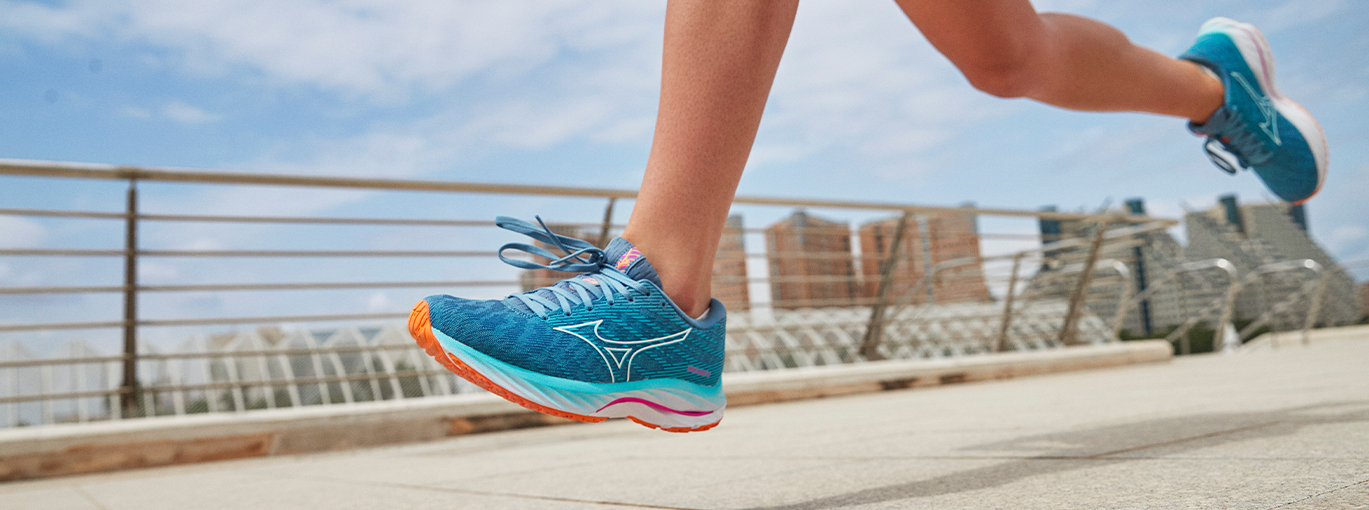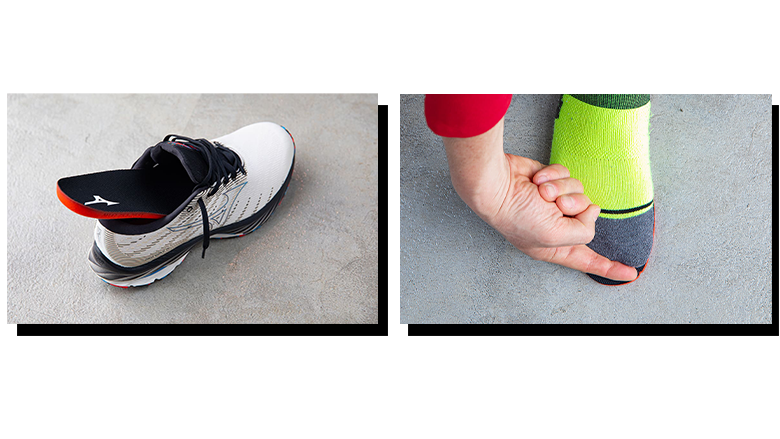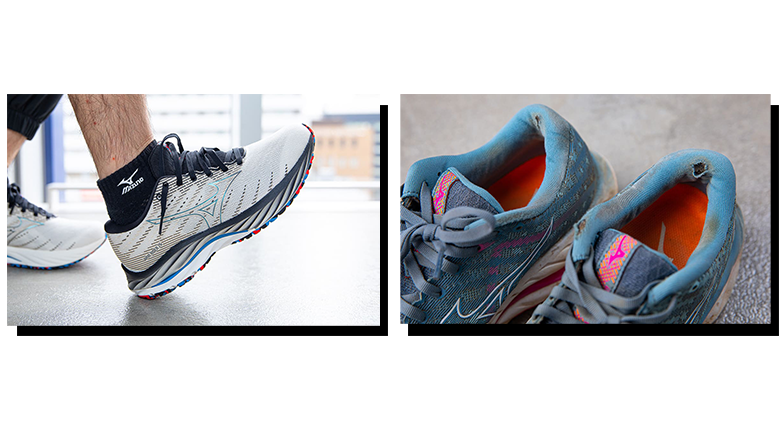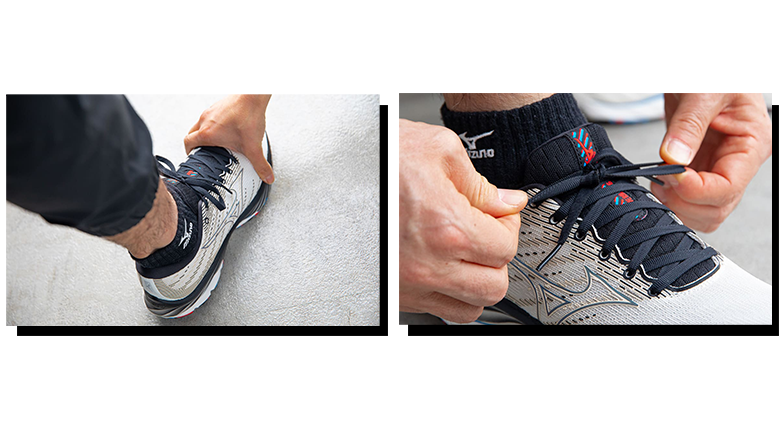How Should My Running Shoes Fit?
Finding the perfect pair of running shoes is different from choosing regular shoes. One significant difference is the fit. Among other reasons, fit is a key factor when choosing shoes for running long distances, such as a marathon. Here is a guide for what kind of fit is ideal and how to select shoes with the right fit for you.
When should you measure your feet?
Point 1 – Focus on the fit
Point 2 – The best time to wear test running shoes is in the afternoon
In general, the left foot and right foot have different lengths from heel to toe. Furthermore, the size of your feet change depending on the time of the day. Fit is a key factor when choosing shoes for running long distances such as marathons. When running long distances our foot circumference changes due to swelling and other issues related to running long distances. Therefore, this factor needs to be considered when choosing running shoes. If you choose shoes based solely on the initial feel, your feet may start to hurt when running a longer distance. If you have a chance to measure your feet or have a fitting in a store, the afternoon would be the best time to do so. When you visit a store, we advise you to bring your current running shoes as these often provide a store clerk with information on your running style.
The toe fit
Point 1 – Pick shoes that are 1 cm longer than your actual size
Point 2 – Use your insole to determine your correct shoe size
Regarding an ideal fit, when the shoe is aligned at your heel, there should be some room in the toe box of your shoe. The best shoe size is the length of your actual foot plus about 1cm. Based on this, if the shoe width feels too tight, it may be best to increase the shoe length by another 0.5 cm or choose shoes with a wide fitting. To measure whether your current shoes are the best size for you, take out the insole, align it with your heel and check how much space you have at the toes. The shoes are the right size if the space in the toe box is about the width of one index finger. Keep in mind that fit is also subjective and that everyone has a different idea of what they consider a good fit for them.
The heel fit
Point 1 – Check to make sure you have no pain or looseness at the Achilles tendon
Point 2 – Excluding the toe area, your foot and the shoe should ideally feel as one
To check the fit of the heel, put on the shoes and tap the ground with the heel several times to eliminate the gap between the heel and the shoe, subsequently, tie the laces. If you do not have pain or looseness at the Achilles tendon, that is a sign of a good fit. Your shoes should always feel snug around your heels. If your heel feels loose, it could slip while running. This in turn could lead to instability, chafing, blisters, and other issues. Another indicator that your feet are moving in your shoes is when you see that the fabric of the heel lining is tearing/torn.
How to tighten your shoelaces
Point 1 – With respect to how tight you should tie your laces, your shoes should fit snugly against your feet
Point 2 – Drip water on the knot of your laces if they easily become loose
The most important factor when tightening the laces of your running shoes is the strength with which your tighten them. If you tie your laces too tight, nerves that pass through the top of your foot may become compressed and cause foot pain. On the other hand, if they are too loose, your feet may slip, and this may places stress on them. Try running with the laces tightened at various strengths to see which one you find comfortable. Moreover, it you find that your laces come undone too quickly, tie your laces with a double knot. You can also try putting two or three drops of water on the know, this will make it harder for your laces to come undone.





